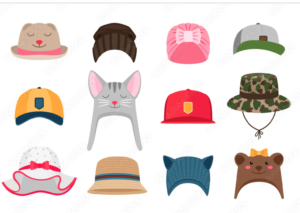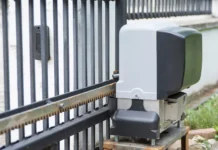When it comes to children’s fashion, hats often play a significant yet understated role. They are more than just a stylish accessory; they serve various practical purposes, from protecting your child’s delicate skin from the sun to keeping them warm during chilly weather. In this beginner’s guide, we will explore everything you need to know about childrens hats, helping you make the best choices for your little ones.

Section 1: Understanding the Different Types of Children’s Hats
Sun Hats
First and foremost, sun hats are essential for protecting your child’s skin from harmful UV rays. These hats typically feature wide brims that shade the face, ears, and neck. Materials such as cotton or straw are commonly used for their breathability and comfort. When selecting a sun hat, ensure it has an adjustable strap to keep it secure on windy days.
Beanies
Beanies are a staple in colder climates, offering warmth and comfort. They are often made of wool, fleece, or acrylic fibers, which provide excellent insulation. Beanies can also be lined with a soft material to prevent itching and discomfort. Consider choosing beanies with fun patterns or animal designs to make them more appealing to children.
Baseball Caps
Baseball caps are a popular choice among children for their casual style and ease of wear. They provide good sun protection for the face and are often adjustable at the back, allowing for a snug fit. Look for caps with ventilation holes or mesh panels to ensure breathability during hot weather.
Bucket Hats
Bucket hats have a timeless appeal and offer all-around protection from the sun. Their downward-sloping brims shield the eyes and neck, making them ideal for outdoor adventures. These hats come in various materials, including cotton, denim, and even waterproof options for rainy days.
Section 2: Choosing the Right Size
Measuring Your Child’s Head
To find the perfect fit, start by measuring your child’s head circumference. Use a flexible measuring tape and wrap it around the widest part of their head, just above the eyebrows and ears. This measurement will help you select the right hat size, ensuring comfort and proper coverage.
Size Charts
Most hat manufacturers provide size charts that correlate head measurements with hat sizes. Refer to these charts when shopping to avoid purchasing a hat that is too tight or too loose. If your child’s measurement falls between two sizes, opt for the larger one for a more comfortable fit.
Section 3: Material Matters
Breathable Fabrics
When it comes to children’s hats, the material is crucial for comfort. Breathable fabrics like cotton, linen, and bamboo are ideal for warm weather, as they wick away sweat and allow air circulation. These materials are also gentle on sensitive skin, reducing the risk of irritation.
Insulating Fabrics
For colder weather, choose hats made from insulating materials such as wool, fleece, or acrylic. These fabrics trap heat effectively, keeping your child warm and cozy. Additionally, some hats feature a thermal lining for extra warmth, which is perfect for winter months.
Section 4: Safety First
Secure Fit
A secure fit is vital to prevent the hat from slipping off during play. Look for hats with adjustable straps, chin ties, or elastic bands to keep them in place. This is particularly important for younger children who may not yet be able to keep their hats on consistently.
Non-Toxic Materials
Ensure the hats are made from non-toxic, child-safe materials. Check for certifications or labels that indicate the hat is free from harmful chemicals. This is especially important for hats that may come into contact with your child’s mouth or skin.
Section 5: Style and Preferences
Fun Designs
Children are more likely to wear hats that they find fun and appealing. Opt for hats with bright colors, playful patterns, or favorite characters. This not only encourages them to wear the hat but also allows them to express their personality.
Matching Outfits
Consider choosing hats that complement your child’s wardrobe. Coordinating the hat with their outfits can make wearing it a more enjoyable experience. For instance, a floral sun hat can pair beautifully with a summer dress, while a cozy beanie can complete a winter ensemble.
Section 6: Caring for Children’s Hats
Cleaning and Maintenance
Proper care extends the life of your child’s hat. Most fabric hats can be machine washed on a gentle cycle, but always check the care label first. Hand washing is recommended for delicate materials or those with intricate details. For wool hats, use a mild detergent and lay flat to dry to prevent shrinking.
Storage
Store hats in a cool, dry place to avoid damage. Avoid crushing or folding hats with stiff brims to maintain their shape. For beanies and other soft hats, consider using a hat organizer or a simple drawer to keep them neat and accessible.
Conclusion
Choosing the right children’s hat involves considering various factors, including the type of hat, size, material, safety, and style preferences. By following this beginner’s guide, you can ensure that your child is both stylish and protected, no matter the weather. With the right hat, your child will be ready to enjoy outdoor activities comfortably and safely.






























